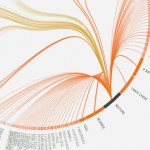connections
A paper by researchers from Princeton University, just published in the open access journal PLoS One, describes a new virus-based technique for probing the connections between neurons while simultaneously monitoring their activity in live animals. Various methods are available for studying the activity of neurons and how they are connected to one another, but examining the co-ordinated activity of multiple nerve cells in neural circuits has, until now, posed a big challenge, because none of them can monitor both activity and connectivity at the same time.
The earliest method for tracing…
The autism spectrum disorders (ASDs), including autism and its milder cousin Asperger syndrome, affect about 1 in 150 American children. There's a lot of evidence that these conditions have a strong genetic basis. For example, identical twins who share the same DNA are much more likely to both develop similar autistic disorders than non-identical twins, who only share half their DNA.
But the hunt for mutations that predispose people to autism has been long and fraught. By looking at families with a history of ASDs, geneticists have catalogued hundreds of genetic variants that are linked to…
SEEDmagazine.com interviews Carl Bergstrom, whose eigenfactor project uses citation databases to map networks of information sharing within science:
We find papers to read by following citation trails. If you have an eigenfactor of 1.5, it means 1.5% of the time, a researcher following citation trails is actually trying to get an article from your journal. . . How do you make the right connections, right? How do you make the critical connections to move thought forward? If you can solve a problem like that, or even just make a little contribution to it, it really accelerates science in a…
